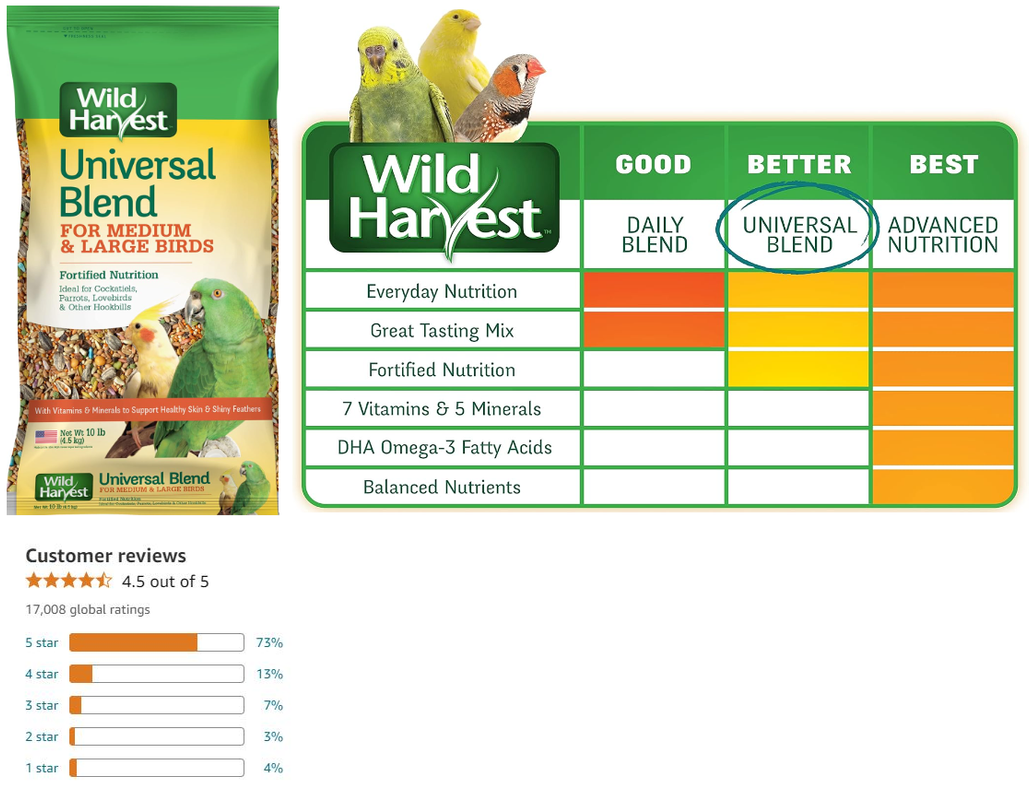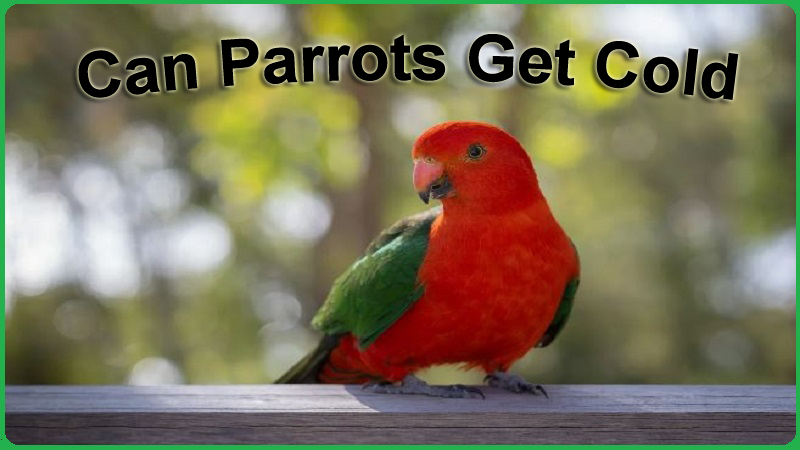Most of parrot breeds are live in the warmer areas near the equator. They like to high temperatures and humidity. So, in your mind, raising an interesting question: Can parrots get cold? Understanding whether parrots experience cold and how they cope with temperature variations.
Do you have more curious about the possibility of parrot’s cold? Then, this golden article is for you. Through this unique content, you will get to know all possible stuffs about whether parrots are safe or not in low temperature? Do parrots feel cold? If they catch cold, then how do you give proper treatment?
Keep Reading! Don’t skip this article in middle, because little knowledge is dangerous for you.
The Physiology of Parrots and Thermoregulation
Parrots also like as other birds, are endothermic or warm-blooded animals. This means they are capable to maintain a constant body temperature regardless of external conditions. Most of parrot species, the optimal body temperature has a range between 40-42 degrees Celsius. To keep get this temperature, parrots have developed various physiological and behavioral adaptations.
Feathers and Insulation: Feathers are important part of body to keep thermoregulation. They help to trap air close to the bird’s body, and then create an insulating layer that helps to retain heat. Parrots fluff up their feathers to enhance this insulating effect when they feel cold, as of this to reduce the heat loss.

Metabolic Rate: Birds contains the higher metabolic rate that helps to generate substantial body heat. This constant metabolic activity contributes parrots to keep maintain their body temperature even in cooler weather.
Behavioral Adaptations: In the wild, parrots take sunbathe to obtain the heat, huddle together, and search the sheltered spots in cooler duration. Even Domestic parrots also seek warm spot in a home.
Do Parrots Feel Cold?
Parrots don’t feel cold as similar to humans. In the wild, some parrot species have ability to adapt to colder temperatures, but most of domestic parrots are not well-suited for cold weather.
Parrots are capable to thrive in temperatures between 18 to 22 degrees Celsius, but some species can tolerate up to 29 degrees Celsius (84 degrees Fahrenheit).
You should maintain a consistent room temperature to keep parrots warm. Ensure the cage keeps away from drafts. So, humidifiers are best option to maintain a healthy humidity level.
Can Parrots Catch A Cold From Humans?
Parrots cannot get a cold from human beings. However, humans can easily spread the cold or flu viruses to each other, but it is very less chance to pass these viruses to birds. Just, few uncommon viruses are existed that can be spread to birds.
Also Read: Parrot Sneezing with its Causes, Symptoms, and Treatment
The major concern is Gram-negative bacteria, if these bacteria get transmission through saliva in birds. This activity can be more harmful to them. So, you should avoid letting birds eat from human mouths and sharing food that has been bitten into.
Even, don’t allow birds to eat from human utensils to prevent the transmission of harmful bacteria. Additionally, you should be carefully when kissing birds to avoid transferring saliva.
What Are Symptoms That a Parrot Is Feeling Cold?
Parrots can display several signs when they are feeling cold. Here are the essential indicators:
Fluffed Feathers: Parrot will fluff up its feathers to trap more air. Then, it creates an insulating layer to retain body heat.
Shivering: Parrots can also get shiver to generate additional body heat through muscle activity.
Lethargy: Cold parrots often become less active. They get as seem sleepy or sluggish, because they conserve energy.
Tucking in Feet: Parrots may tuck one or both feet into their feathers to keep them warm.
Huddling: Parrots might huddle in a corner of their cage. As well as, they seek out the warmest part of their environment.
Reduced Appetite: They might eat less as they conserve energy. They always focus on maintaining their body temperature.
Seeking Warmth: Parrots will move closer to heat sources, such as lamps, heaters, or sunlit areas, to stay warm.
Cold Beak and Feet: Their beak and feet might feel colder to the touch than usual.
When you get recognize of these signs, then you should take steps to warm the parrot’s environment. Otherwise, they can get many health issues related to cold stress.
Health Impact of Cold on Parrots
When your parrots get exposure to cold, they can have several negative health impacts on parrots:
Also Read: How to Tame a Parrot? Tips & Techniques for Success
Hypothermia: If a parrot’s body temperature drops too low, it can suffer from hypothermia. Their life can become threatening, if they get extreme lethargy, weakness, and in severe cases, unconsciousness.
Respiratory Infections: Cold environments, especially when damp, can lead to respiratory infections. There are many signs, like as coughing, sneezing, nasal discharge, and difficulty breathing. Parrots can suffer commonly respiratory illnesses such as aspergillosis and pneumonia.
Weakened Immune System: Keeping expose regularly to cold stress weakens the immune system, then parrots make more susceptible to infections and diseases. If parrots get weaken immune system, they can take more time to recover the illnesses.
Weight Loss: If the parrot’s diet does not provide sufficient calories and nutrients. Then, it increases the metabolic demands to maintain body temperature can lead to weight loss
Feather Plucking: Stress from being cold can lead to behavioral issues such as feather plucking. Parrots might pluck their feathers in an attempt to generate heat or due to stress-induced behaviors.
Joint and Muscle Problems: Cold temperatures can exacerbate joint stiffness and muscle pain. Especially in older parrots or those with pre-existing conditions like arthritis.
How Can Parrots Adapt to Cold Environments?
Parrots can easily adapt to cold environments, but it needs the gradual acclimation and specific measures to ensure their comfort and safety.
Environmental Control
- Place the cage in a warm, draft-free area.
- Use bird-safe heating options like space heaters, ceramic heat emitters, or heated perches.
- Cover the cage at night with a blanket or specially designed cage cover to retain warmth.
- Monitor the temperature around the cage with thermometers.
Diet and Nutrition
- Provide a diet rich in calories to meet increased metabolic demands.
- Include seeds, nuts, and other high-fat foods in moderation.
Humidity Levels
- Use humidifiers to maintain adequate humidity levels.
- Encourage regular baths or misting with warm water to keep feathers healthy and moist.
Behavioral and Social Needs
- Ensure plenty of social interaction and mental stimulation to prevent boredom and stress.
- Provide opportunities for exercise and activity with toys, climbing structures, and supervised out-of-cage time.
Health Monitoring and Care
- Schedule regular veterinary check-ups
- Regularly observe for signs of cold stress, such as fluffed feathers, shivering, lethargy, and reduced appetite.
- Provide extra nesting material or soft bedding.
Emergency Preparedness
- Have a backup heating source in case of power outages or heating system failures.
- Keep a smaller travel cage ready to move to the warmest part of the house if needed.
What is The Best Temperature for Parrots?
The best temperature for parrots generally falls between 65 to 85 degrees Fahrenheit (18 to 29 degrees Celsius). On this temperature, parrots feel comfortable and maintain their optimal body temperature without using extra energy. Here are some guidelines to consider:
Also Read: Is Your Parrot Coughing? Causes, Symptoms, and Treatment
Avoid Extremes: Parrots should not be exposed to temperatures below 60 degrees Fahrenheit (15 degrees Celsius) for extended periods, as they can become cold-stressed. But, if they get expose to temperatures above 32 degrees Celsius, then can feel to overheating.
Stable Environment: Keeping the temperature stable is crucial. If, you change temperature sudden, parrots can stress parrots and lead to health issues.
Species-Specific Needs: While the general range is suitable for most parrots, some species may have specific temperature preferences based on their natural habitat. For example, tropical parrots might prefer slightly warmer conditions, whereas species like the Kea from alpine regions can tolerate cooler temperatures.
Night-Time Temperatures: Ensure that night-time temperatures do not drop too low. So, cage covers are most helpful to retain warmth and keep parrots comfortable while they sleeping.
FAQs (Frequently Asked Questions)
How Do I Know If My Parrot Has a Cold?
To know if your parrot has a cold, you can notice various symptoms like sneezing, nasal discharge, coughing, wheezing, lethargy, reduced appetite, and fluffed-up feathers. If you see these signs, quickly consult an avian vet promptly to ensure proper diagnosis and treatment.
Do Parrots Feel Cold in The Morning & Night?
Yes! Parrots can feel cold in the morning and night, especially if night time temperatures got drop significantly. Now, you should be kept their cage in a draft-free area and use a cage cover at cold duration. So, you have to maintain a consistent and comfortable temperature to prevent them from feeling cold.
Do Parrots Feel Cold in AC?
Yes! Parrots can feel cold in air conditioning. If, your parrots get exposure to cool air from AC units. Cause of those, they can get uncomfortable or even ill. Keep notice, their cage is not directly in the AC’s airflow, and always monitor the room temperature to keep it within their comfortable range (18°C to 27°C).
What Do Parrots Do When They are Cold?
When parrots get cold, they often fluff up their feathers to trap heat, shiver, and become less active. They also tuck their beak under their wing to conserve warmth. They may also hide in a corner of their cage or seek out warmer spot if available.
How Do You Treat a Parrot’s Cold?
To treat a parrot’s cold, you should keep it warm to ensure proper hydration, and offer nutritious food. To prevent spreading it, you can isolate victim parrots from other birds. Take consultation from an avian vet for diagnosis and treatment. This may include antibiotics or other medications. Always keep maintaining a clean, stress-free environment to aid recovery.
Do Parrots Feel Cold in The Winter?
Yes! Parrots can feel cold in the winter, especially if they are not acclimated to lower temperatures. Keep ensure their environment gets. For this, you can consider a cage cover and bird-safe heating devices to maintain a comfortable temperature for their health and well-being.
Conclusion
At the final, yes parrots get cold, because they are highly sensitive birds to weather changes.
If this post is valuable for you, then please share it along with your friends, family members, pet lovers or relatives over social media platforms like as Facebook, Instagram, Linked In, Twitter, and more.
Also Read: How to Care a Sick Parrot? Symptoms, Causes, & Treatment
Do you have any experience, tips, tricks, or query regarding on this? You can drop a comment!
Happy Learning!!






